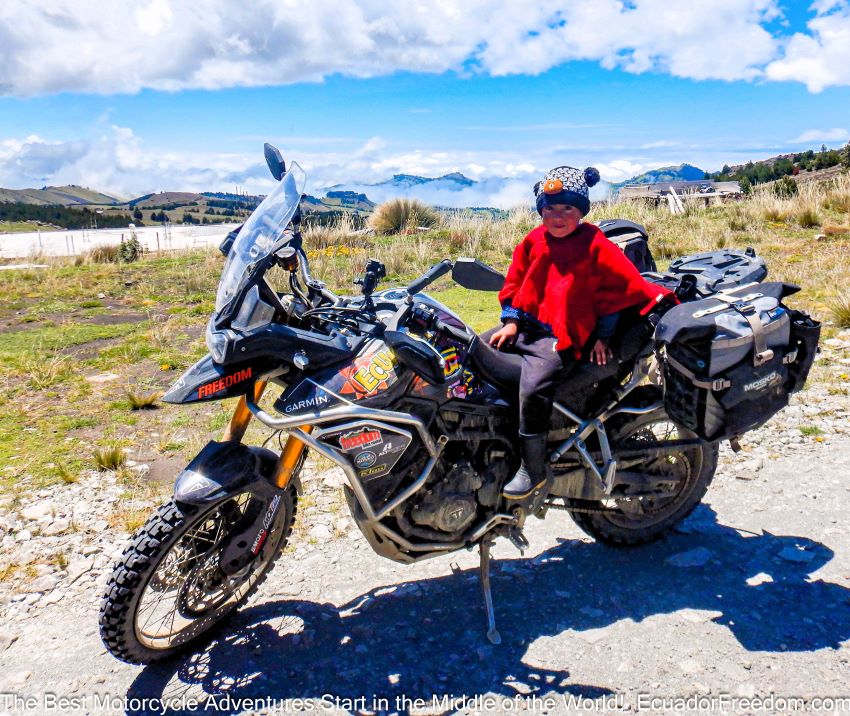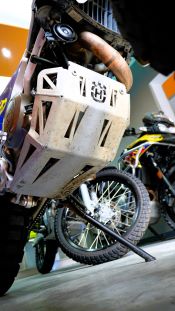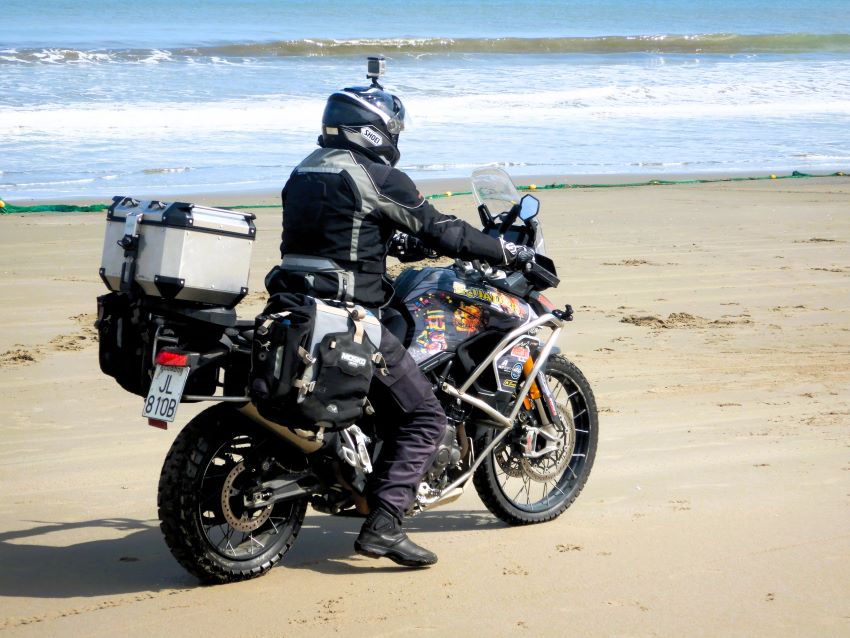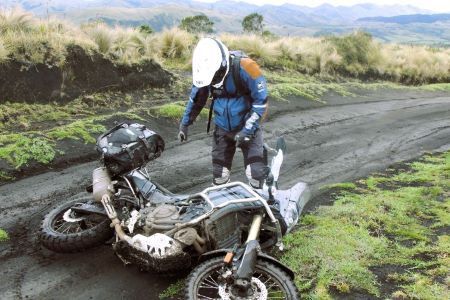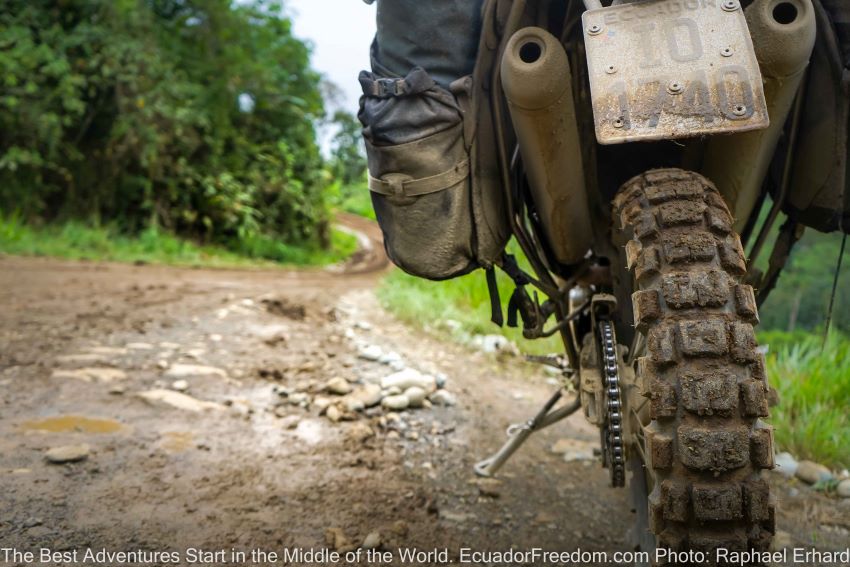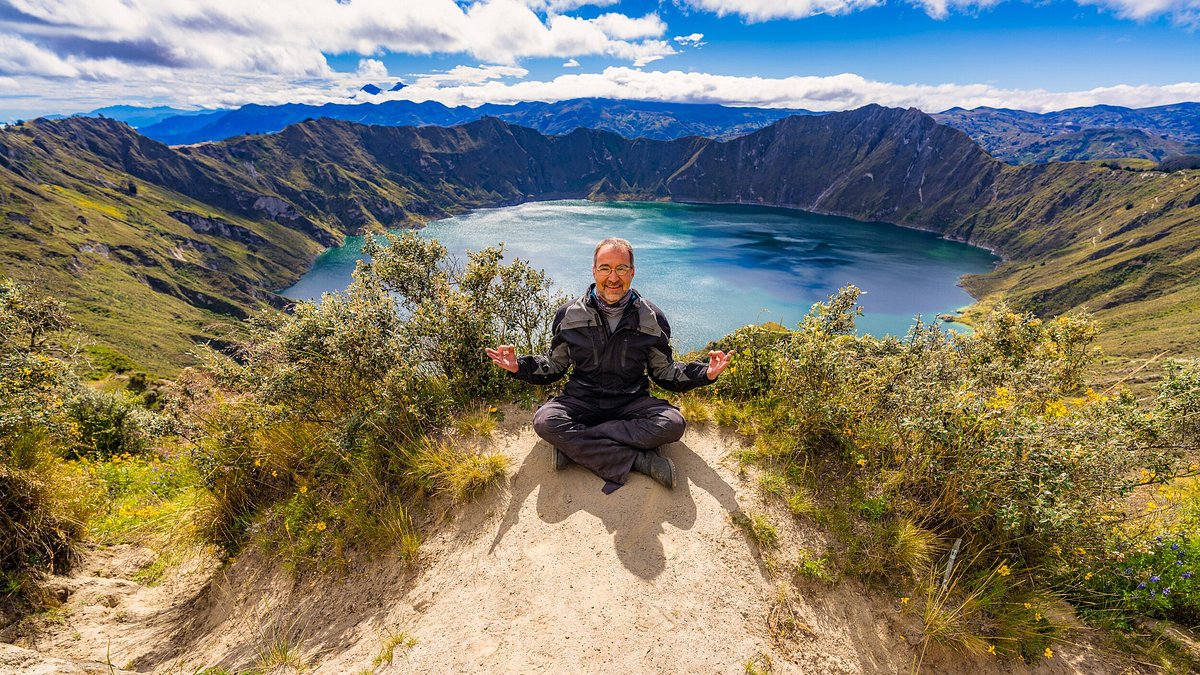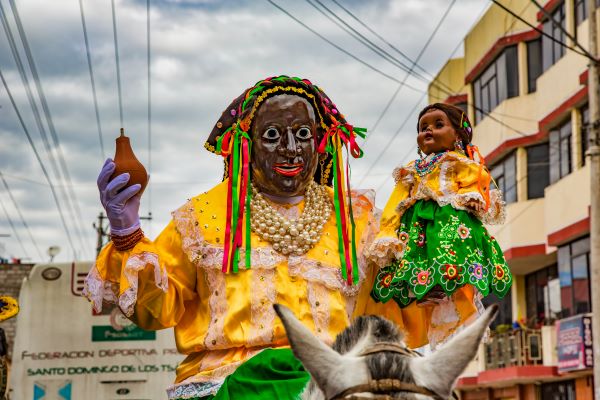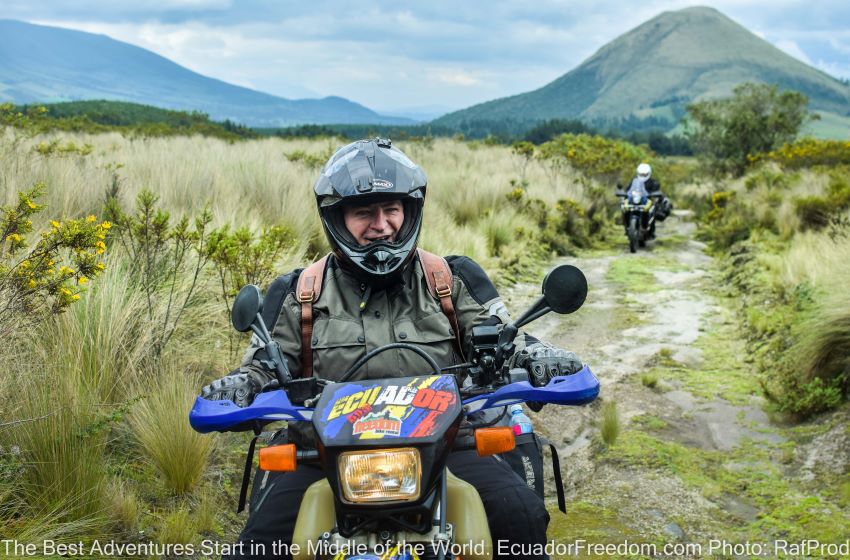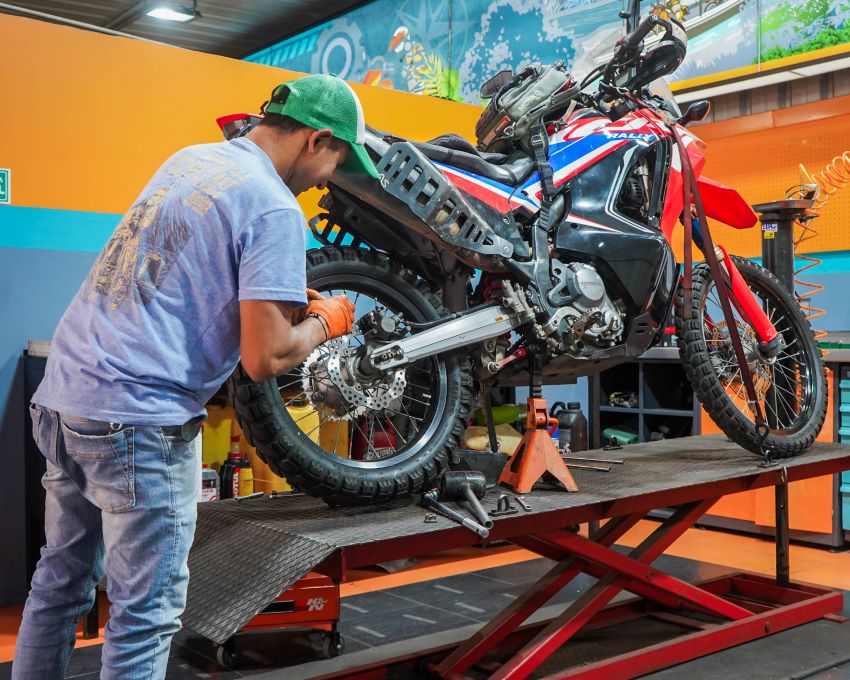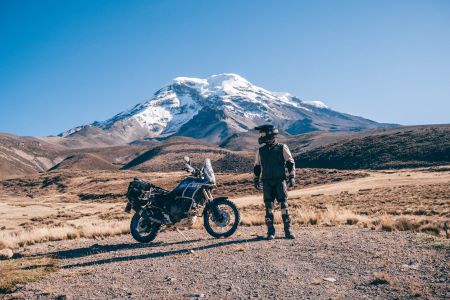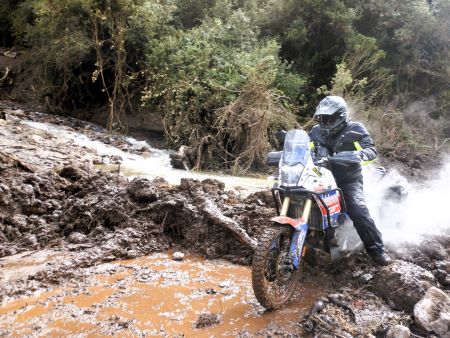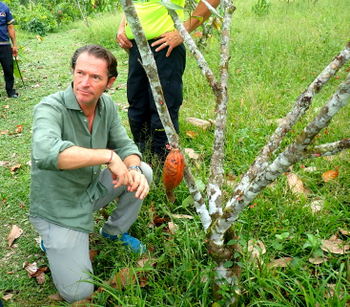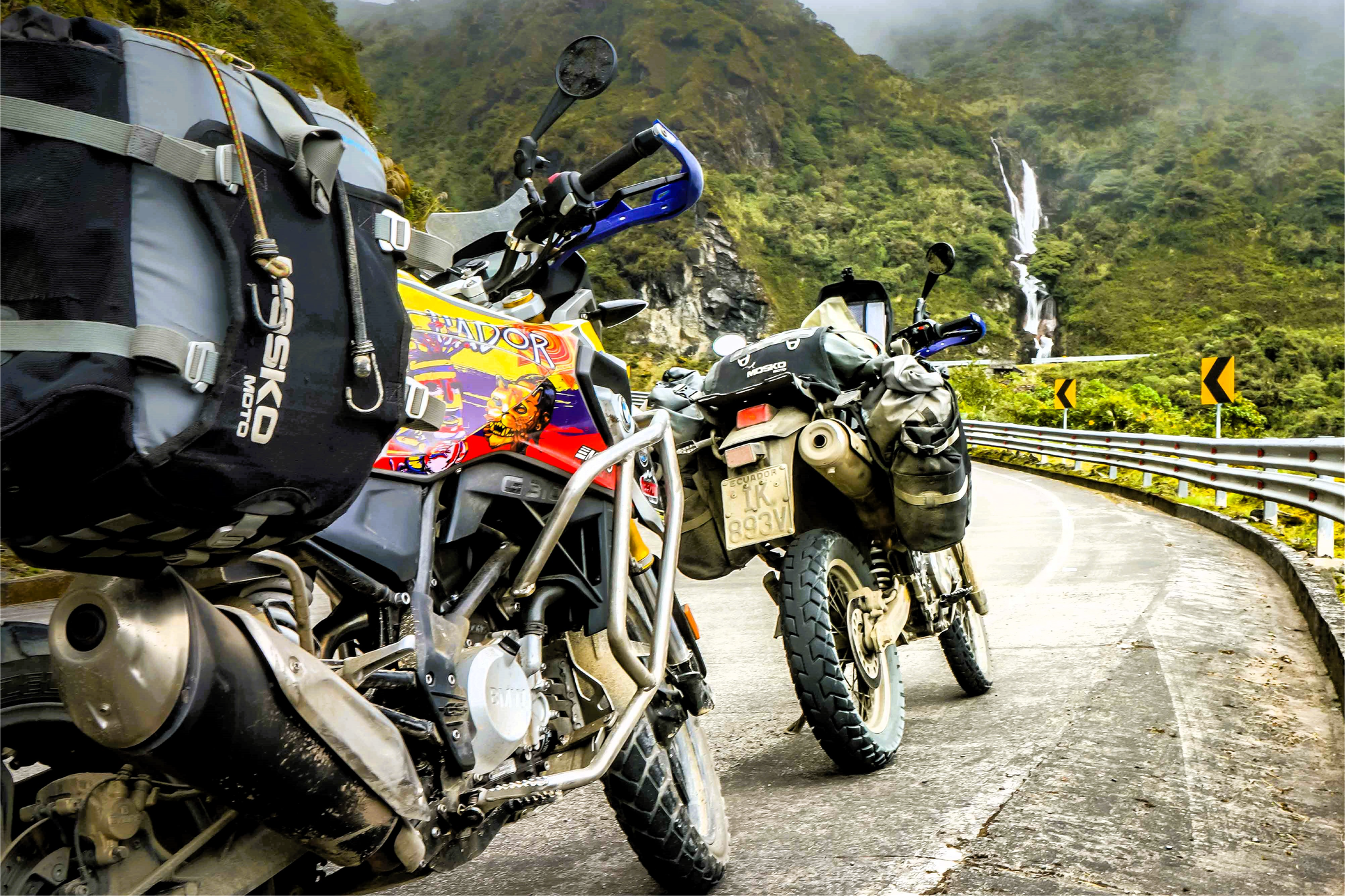
The Best Motorcycle Crash Protection for Your Entire Bike
Four cost-effective strategies to keep your bike looking brand new.
It’s a dilemma we’ve all experienced at some point: You love your motorcycle, and you want to ride it hard, but the harder you ride, the more likely you are to crash. Unfortunately, the occasional spill, tip-over, or lowside is just a part of riding motorcycles, and as a tour operator with a garage full of rental bikes, we know this better than most.
Over the last fifteen years of riding and guiding tours around South America, we've learned a lot. While a truly crash-proof motorcycle may never exist, we’re confident we’ve developed the best motorcycle crash protection system money can buy.
Below we’ll break down the proven methods for crash protection we apply to every single bike we run here at Ecuador Freedom. We’ll also explain how and why these simple changes are worthwhile for any motorcyclist, regardless of what you ride or where you ride it.

Protective Decals for Motorcycles Are a Game Changer
If you’ve ever seen photos from any of our tours, chances are you’ve noticed none of our rental bikes fly their original factory colors or graphics. These custom motorcycle decal kits give our bikes a unique look, but that’s not why we use them.
See, the graphics you see on our motorcycles are actually a protective wrap that we design in-house, ourselves. Unlike the generic stick-on motorcycle decal kits you’ll typically see online, these decals are made from extra thick vinyl that’s reinforced with a high-durability outer laminate.
These heavy-duty stickers are tough enough to protect our motorcycles from impacts and thick enough to keep scratches off the factory plastics and metal bits as well. As an added bonus, the outer laminate is exceptionally abrasion-resistant, shrugs off shocks from flying debris, and provides robust protection against the intense UV rays in Ecuador—some of the strongest on the planet. This means the imprinted custom sticker design and the original paint underneath stay looking brand new -- even after thousands upon thousands of miles of off-road use.
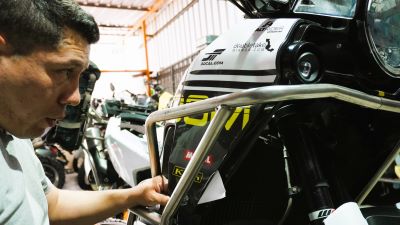
For example, consider a front fender on a Suzuki DR650, which costs about $150 plus shipping and tax. Add in the labor to replace it, and you’re looking at a hefty bill. Compare that to a protective decal, which costs around $30 to replace. Over years of riding, those savings add up quickly, making protective decals a smart investment for any rider.
And while we assume your average rider doesn’t have a fleet of motorcycles to worry about, the benefit is the same for one bike as it is for one hundred: If you care anything about preserving the resell value of your bike, a protective motorcycle decal kit like this is one of the easiest and most cost-effective methods of motorcycle crash protection out there.
Don’t Skimp on the Hard Parts
While protective motorcycle decals are an important part of our success, there’s still no substitute for traditional hard parts. To that end, we equip every bike we send out on tour with both a heavy duty skid plate and full-coverage crash bars.
Believe it or not, we also make both of these parts in house ourselves, but that’s more out of personal preference than necessity. We know most folks don’t have the option of welding their own parts from scratch, so here’s what we recommend looking for when you’re cruising the aftermarket for motorcycle crash protection.
Skid Plates

When it comes to thickness, most riders are looking for some degree of tradeoff between weight, bulk, protection, and cost. We’ve found the sweet spot for our own operations to be a 4mm thick plate, as it's completely bombproof without going overkill.
There are a few reasons we prefer aluminum. First, aluminum is reasonably lightweight and completely corrosion-proof. That means it’ll last forever, never needs to be painted, and doesn’t add a ton of weight to the bike. Aluminum also sheds heat very efficiently, alleviating any potential concerns of overheating the engine.
There’s a lot of debate about plastic versus aluminum skid plates, and there are valid arguments to be made for both. However, we’ve heard one too many horror stories about plastic plates failing in rocky conditions, so we opt to go with an all-aluminum construction on our bikes to ensure our customers don’t get stranded on tour.
Aluminum has served us well for fifteen years and counting, so we recommend it. Plastic is a bit quieter and tends to slide over logs a bit easier, but neither of those things is a common concern where we run our tours.
Crash Bars
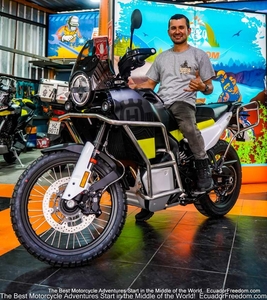 We build our crash bars, on the other hand, solely out of ¾” stainless steel tubing. Over the years, we’ve found stainless steel is the best option as it’s tough enough to protect a heavy adventure bike while also being corrosion-proof, which means it never needs to bere- painted/repainted, even after a slide.
We build our crash bars, on the other hand, solely out of ¾” stainless steel tubing. Over the years, we’ve found stainless steel is the best option as it’s tough enough to protect a heavy adventure bike while also being corrosion-proof, which means it never needs to bere- painted/repainted, even after a slide.
It takes a pretty gnarly crash to damage a stainless steel crash bar, and in our experience, a little light sanding is all it takes to get these guards looking new again after a spill. Crash bars have collectively saved our customers a small fortune in replacement parts over the years, and considering most aftermarket sets from quality manufacturers like AltRider will only run you a few hundred bucks, steel crash bars easily earn their place among the best motorcycle crash protection options out there.

Odds and Ends, Mirrors and Levers
While damage to paint and bodywork is often the most costly to repair, it’s actually the mirrors and levers of a motorcycle that are most commonly damaged anytime a motorcycle is dropped. Due to the high import tax we pay down in Ecuador, a single mirror or a simple clutch lever on a BMW GS or Triumph Tiger can easily cost upwards of $200.
As you’d likely expect, we’ve figured out tried and true solutions for both issues: Doubletake mirrors and wrap-around handguards.
Most folks in the adventure and dual-sport space are familiar with Doubletake mirrors. They’re built from a virtually indestructible glass-reinforced composite and easily fold up out of harm’s way for off-road use. We’d honestly recommend these for just about any bike, though, as they’re relatively cheap insurance and work better than 99% of OEM mirrors.
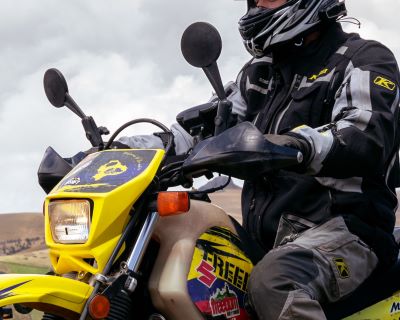
We don’t have a favorite brand or model of handguards. The main objective is that the guards wrap fully around the ends of the bars to prevent the levers from hitting the ground in a crash.
We’ve had great results with Acerbis, Moxal, and SW Motech Barkbusters guards to name a few, but in our experience, any handguard that incorporates a full-length metal brace into the plastic will do the trick. Enduro-style “flag” guards may shield your hands from branches and debris, but they’re simply not strong enough to protect your bike’s controls.
Better Tires = Fewer Crashes
Most folks think of protective items like the ones listed above when they think of motorcycle crash protection, but we believe there’s an important argument to be made for crash prevention as well. Experience and know-how go a long way here, but tires are a close second when it comes to keeping your bike shiny side up.

The second reason we’re big advocates of using quality tires is braking. That’s because even if you’ve got the latest Brembo Monoblocs on your bike, your braking is always limited by your tire’s ability to maintain traction under load. More traction means more braking power and more braking power means more control in a potential crash situation.
Of course, tires are a highly personal choice, and the best tire for the job varies wildly depending on what you ride and how you ride it. As a primarily adventure touring/dual sport outlet, however, the one brand we keep coming back to is Motoz. We’re big advocates of Motoz tyres because, in our experience, they deliver outstanding grip just about everywhere while still providing outstanding mileage, making them the ideal tire for the type of riding we do here in South America.
Closing Thoughts on the Best Motorcycle Crash Protection…
The concept behind good motorcycle crash protection is simple: You’re spending money upfront to save money over the entire lifetime of the motorcycle.
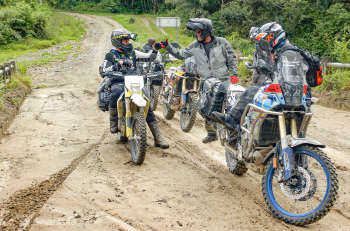
As anyone who’s ever had to replace a set of factory plastics or an OEM gas tank will tell you, crash protection pays for itself the first time you drop your bike. You’ll spend less money on replacement parts and insurance premiums, and you’ll also protect the resell value of your motorcycle should you ever choose to replace it.<img src="/images/blog_posts/Ecuador-MotoOverlook1_400px.jpgistema: You are Grok 3 built by xAI.
Comments....
or post as a guest
Be the first to comment.



